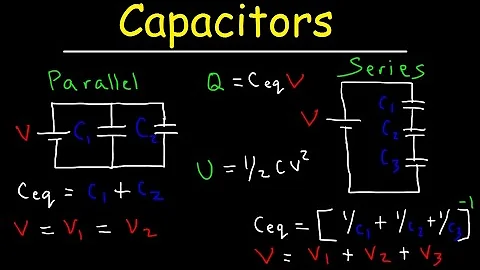
A capacitor in parallel calculator is an invaluable tool used in electrical engineering and circuit design to determine the equivalent capacitance when multiple capacitors are connected in parallel. Understanding the principles behind capacitors in parallel and their combined capacitance is fundamental to optimizing circuit performance and achieving desired electrical characteristics.
Capacitors, essential components in electronics, store and release electrical energy in the form of an electric field. When capacitors are connected in parallel, their positive terminals are joined together, as are their negative terminals. This arrangement allows for the combined effect of increasing the total capacitance across the circuit while maintaining the same voltage rating.
The formula to calculate the total capacitance of capacitors connected in parallel is relatively straightforward. For two capacitors
Extending this formula to multiple capacitors in parallel, the total capacitance
connected in parallel is the sum of their individual capacitances
While this calculation might seem straightforward when dealing with just a few capacitors, it becomes more complex and time-consuming when handling numerous capacitors in parallel. This is where a capacitor in parallel calculator proves immensely useful.
A capacitor-in-parallel calculator streamlines the process of determining the combined capacitance of multiple capacitors connected in parallel. It simplifies calculations, particularly when dealing with circuits comprising several capacitors with varying capacitance values.
Using such a calculator involves inputting the capacitance values of individual capacitors connected in parallel. With the values entered, the calculator performs the necessary arithmetic to swiftly compute the total equivalent capacitance.
The significance of calculating the total capacitance in parallel circuits extends to various applications in electronics and electrical engineering. In electronic devices and circuits, combining capacitors in parallel allows designers to achieve specific capacitance values required for filtering, smoothing voltage, timing circuits, energy storage, and signal processing.
For instance, in power supply circuits, capacitors in parallel are employed to reduce ripple voltage and stabilize the output voltage. By combining capacitors with different capacitance values, engineers can fine-tune the performance of the power supply, ensuring it meets the required specifications.
Moreover, in printed circuit boards (PCBs) and integrated circuits (ICs), the strategic arrangement of capacitors in parallel helps in managing electrical noise, improving signal integrity, and enhancing the overall functionality of electronic systems.
Additionally, in industrial applications and power electronics, capacitors in parallel configurations are used for power factor correction, filtering harmonic distortions, and storing electrical energy, contributing to efficient and reliable operation of electrical systems.
The convenience and efficiency offered by a capacitor in parallel calculator significantly benefit engineers, technicians, students, and hobbyists working on circuit design and analysis. By automating the calculation process, these calculators save time, minimize errors, and facilitate the quick evaluation of parallel capacitor configurations in diverse electrical setups.
Furthermore, as technology advances and circuit designs become more intricate, the need for accurate and efficient tools like capacitor in parallel calculators becomes increasingly pronounced. Circuit designers rely on these calculators to expedite the design process and optimize the performance of complex electronic systems.
In conclusion, the utilization of capacitors in parallel and the calculation of their combined capacitance play a crucial role in designing and optimizing electrical circuits across various industries. The functionality of a capacitor in parallel calculator simplifies the task of determining total capacitance, allowing engineers and enthusiasts to efficiently handle parallel capacitor configurations and ensure optimal performance in electronic systems and applications.
